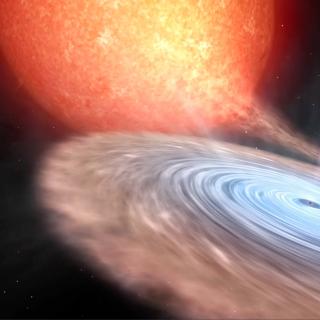Bibcode
Van Dyk, Schuyler D.; Zheng, WeiKang; Maund, Justyn R.; Brink, Thomas G.; Srinivasan, Sundar; Andrews, Jennifer E.; Smith, Nathan; Leonard, Douglas C.; Morozova, Viktoriya; Filippenko, Alexei V.; Conner, Brody; Milisavljevic, Dan; de Jaeger, Thomas; Long, Knox S.; Isaacson, Howard; Crossfield, Ian J. M.; Kosiarek, Molly R.; Howard, Andrew W.; Fox, Ori D.; Kelly, Patrick L.; Piro, Anthony L.; Littlefair, Stuart P.; Dhillon, Vik S.; Wilson, Richard; Butterley, Timothy; Yunus, Sameen; Channa, Sanyum; Jeffers, Benjamin T.; Falcon, Edward; Ross, Timothy W.; Hestenes, Julia C.; Stegman, Samantha M.; Zhang, Keto; Kumar, Sahana
Bibliographical reference
The Astrophysical Journal, Volume 875, Issue 2, article id. 136, 23 pp. (2019).
Advertised on:
4
2019
Journal
Citations
79
Refereed citations
75
Description
We present extensive optical photometric and spectroscopic observations,
from 4 to 482 days after explosion, of the Type II-plateau (II-P)
supernova (SN) 2017eaw in NGC 6946. SN 2017eaw is a normal SN II-P
intermediate in properties between, for example, SN 1999em and SN 2012aw
and the more luminous SN 2004et, also in NGC 6946. We have determined
that the extinction to SN 2017eaw is primarily due to the Galactic
foreground and that the SN site metallicity is likely subsolar. We have
also independently confirmed a tip-of-the-red-giant-branch (TRGB)
distance to NGC 6946 of 7.73 ± 0.78 Mpc. The distances to the SN
that we have also estimated via both the standardized candle method and
expanding photosphere method corroborate the TRGB distance. We confirm
the SN progenitor identity in pre-explosion archival Hubble Space
Telescope (HST) and Spitzer Space Telescope images, via imaging of the
SN through our HST Target of Opportunity program. Detailed modeling of
the progenitor’s spectral energy distribution indicates that the
star was a dusty, luminous red supergiant consistent with an initial
mass of ∼15 M ⊙.
Related projects

Black holes, neutron stars, white dwarfs and their local environment
Accreting black-holes and neutron stars in X-ray binaries provide an ideal laboratory for exploring the physics of compact objects, yielding not only confirmation of the existence of stellar mass black holes via dynamical mass measurements, but also the best opportunity for probing high-gravity environments and the physics of accretion; the most
Montserrat
Armas Padilla